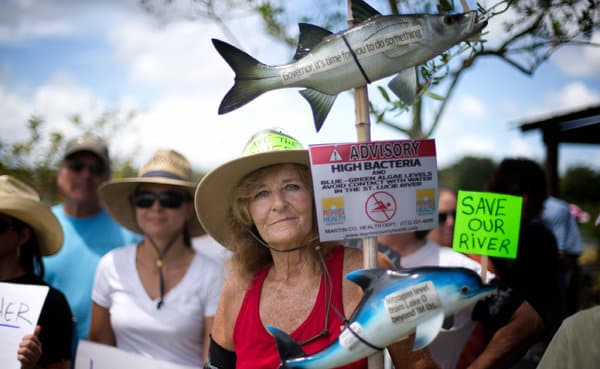
Polluted Bubble Ready to Burst
CLEWISTON, Fla. — On wind-whipped days when rain pounds this part of South Florida, people are quickly reminded that Lake Okeechobee, with its vulnerable dike and polluted waters, has become a giant environmental problem far beyond its banks.Beginning in May, huge downpours ushered in the most significant threat in almost a decade to the bulging lake and its 80-year-old earthen dike, a turn of events with far-reaching consequences. The summer rains set off a chain reaction that devastated three major estuaries far to the east and west, distressing residents, alarming state and federal officials and prompting calls for remedial action.
With lake waters at their limit, there were only two choices, neither of them good. One was to risk breaching the 143-mile dike, a potential catastrophe to the agricultural tracts south of the lake and the small communities that depend on them. The other was to release billions of gallons of polluted water into delicate estuaries to the east and west.
Following its post-Hurricane Katrina guidelines, the Army Corps of Engineers chose the estuaries, rather than test the dike’s vulnerabilities.
Read the full article at the New York Times, written by Lizette Alvarez.









